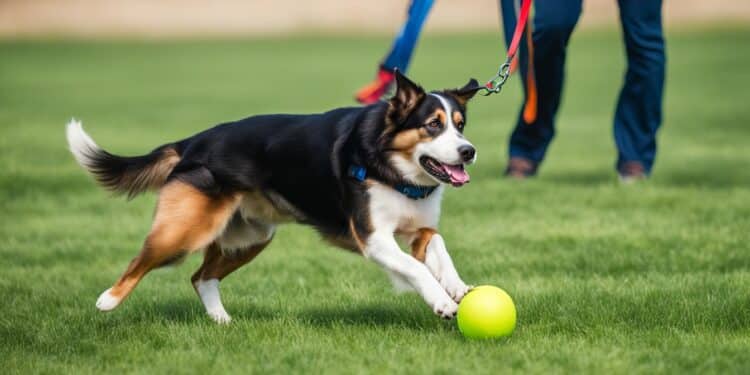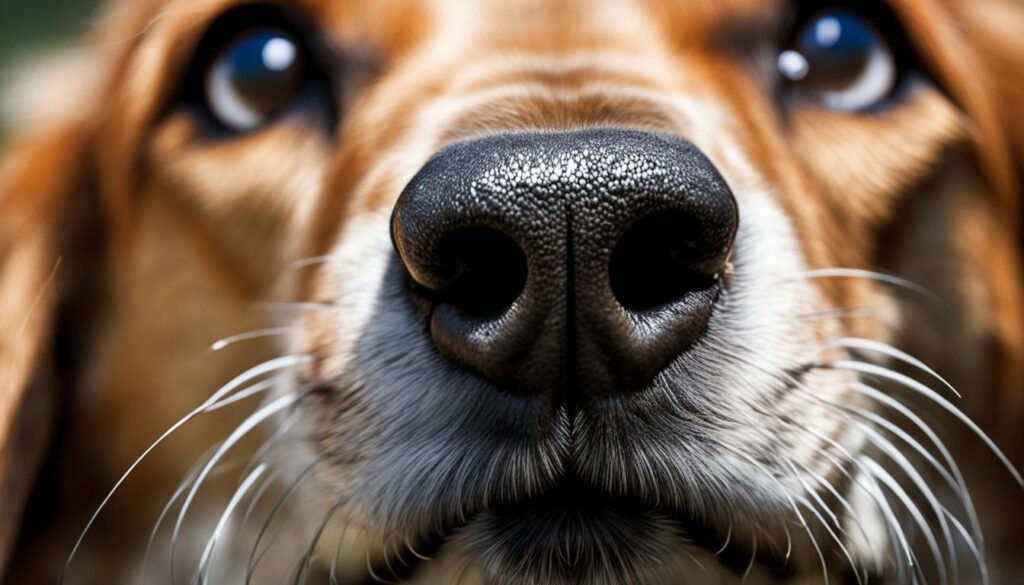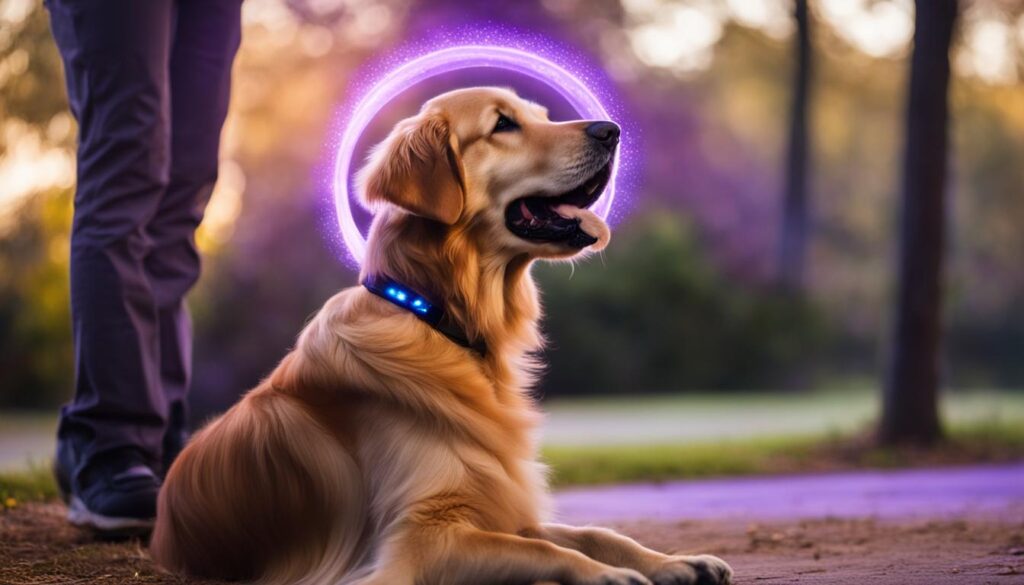Training Techniques for Dogs with Disabilities

Training dogs with disabilities requires specialized techniques that cater to their unique needs and abilities. Whether a dog is blind, deaf, or has mobility challenges, adaptive training methods can help them live full and rewarding lives. In this article, we will explore the different types of disabilities that dogs can have and how to create effective training plans that promote their independence and well-being.
When it comes to disabled dog training, it’s important to understand the specific limitations and abilities of each individual dog. Blind dogs rely on their sense of smell and hearing to navigate their environment, while deaf dogs require visual cues and vibrations for communication. Dogs with mobility challenges may need assistance in building strength and coordination.
Adaptive training techniques can help utilize a dog’s remaining senses and abilities. By focusing on their heightened sense of smell or their exceptional hearing, trainers can effectively communicate with and train disabled dogs. Some of these techniques include clicker training for deaf dogs and using sign language for blind dogs.
Special needs training requires patience, consistency, and a deep understanding of the dog’s condition. Through positive reinforcement and the use of adaptive training tools, such as scent maps and halos for blind dogs, owners can enrich their handicapped dogs’ lives and help them learn new behaviors.
In the following sections, we will delve into specific training techniques for dogs with disabilities, highlighting how owners can support their dogs’ unique needs. From clicker training to scent maps, we will provide actionable insights to help you train your disabled dog effectively.
Types of Disabilities in Dogs
With their different breeds and genetic makeup, dogs can experience various types of disabilities that may impact their quality of life. These disabilities can include blindness, deafness, and mobility challenges. Understanding the specific disability that a dog has is crucial for tailoring training techniques to accommodate their unique needs.
Blindness in Dogs
Blindness can occur in dogs due to a variety of reasons, ranging from congenital diseases to ongoing eye infections or injuries. It is important to note that blind dogs may still have some degree of vision or rely on their other senses to navigate their surroundings. By focusing on techniques that leverage their heightened sense of hearing and smell, blind dogs can successfully adapt to their environment and learn new behaviors.
Deafness in Dogs
Deafness can be common in certain breeds or develop over time due to chronic ear infections. Dogs rely heavily on their hearing to communicate and understand commands, so training techniques need to be adjusted for deaf dogs. Visual cues, such as sign language or hand signals, can be used effectively to communicate with them. Additionally, training methods that incorporate scent can also provide valuable feedback for deaf dogs.
Mobility Challenges in Dogs
Mobility challenges in dogs can result from spinal cord injuries, limb amputations, or diseases that affect their muscles or joints. These challenges can significantly impact a dog’s ability to move and participate in daily activities. Training techniques that focus on building strength, coordination, and balance can help dogs overcome mobility challenges and improve their overall well-being.
It is important to note that not all disabilities are incurable or permanent, and some can be managed or even treated with proper veterinary care and support. Working closely with a veterinarian or a professional dog trainer experienced in training disabled dogs can provide invaluable guidance and resources.
| Disability | Cause | Training Considerations |
|---|---|---|
| Blindness | Can be caused by congenital diseases, ongoing eye infections, or injuries. | – Focus on utilizing the dog’s sense of hearing and smell to navigate their environment. – Use verbal cues combined with hand signals for communication. – Create a scent map to help the dog mentally visualize their surroundings. |
| Deafness | Can be common in certain breeds or develop over time due to chronic ear infections. | – Use visual cues like sign language or hand signals for communication. – Incorporate scent-based training methods to provide feedback. – Utilize vibration collars or floor stomping for attention cues. |
| Mobility Challenges | Result from spinal cord injuries, limb amputations, or diseases affecting muscles or joints. | – Focus on building strength, coordination, and balance. – Utilize adaptive tools like harnesses and carts for support. – Modify training exercises to accommodate physical limitations. |
Utilizing Heightened Senses in Adaptive Training
Dogs possess remarkable senses, particularly their sense of smell and hearing, which can be effectively incorporated into adaptive training methods. A dog’s sense of smell is extraordinary and far superior to that of humans, enabling them to detect scents with exceptional precision. Their sense of hearing is also highly sensitive, encompassing a wide range of frequencies and the capability to perceive sounds that are inaudible to humans.
By capitalizing on a dog’s heightened senses, adaptive learning plans can be devised to facilitate effective communication and training for disabled dogs. This approach acknowledges and harnesses the dog’s remaining abilities, maximizing their potential for learning and growth.
When designing an adaptive training program, it is crucial to consider the unique sensory capabilities of the dog. Understanding the significance of a dog’s sense of smell and hearing in the training process can significantly enhance their learning experience and overall development.

By tailoring training techniques to focus on a dog’s heightened senses, trainers can establish a deeper connection with disabled dogs and facilitate greater learning outcomes. Incorporating olfactory stimuli and auditory cues can foster engagement and understanding, allowing the dog to comprehend and respond to commands effectively.
The Dog’s Sense of Smell
A dog’s sense of smell is a remarkable asset that can be leveraged in adaptive training. Compared to humans, dogs possess up to 300 million olfactory receptors in their noses, while humans only have around 5 million. This exceptional olfactory system allows dogs to detect scents that are undetectable to humans.
When training a disabled dog, incorporating scents into the learning process can aid in reinforcement and association. By introducing scents associated with specific behaviors or actions, trainers can create a powerful connection that enhances the dog’s understanding and retention.
The Dog’s Hearing
The dog’s sense of hearing is also highly developed, enabling them to perceive sounds that are beyond the range of human hearing. Dogs can detect frequencies ranging from 40 Hz to 60,000 Hz, whereas humans typically hear sounds between 20 Hz and 20,000 Hz.
In adaptive training, auditory cues can play a crucial role in guiding the dog’s actions and behavior. Utilizing distinct sounds or tones can help convey commands and reinforce desired behaviors. Trainers can introduce specific auditory cues paired with rewards to facilitate effective communication and learning.
Utilizing a dog’s heightened senses, such as their exceptional sense of smell and hearing, in adaptive training can open up new avenues for communication and learning. By tailoring training techniques to focus on these senses, trainers can create a rewarding and engaging learning experience for disabled dogs.
Training Techniques for Deaf Dogs
Deaf dogs require specialized training techniques that utilize their visual senses and other heightened senses. By utilizing adaptive training methods, owners can effectively communicate and teach deaf dogs new behaviors. Here are three effective training techniques for deaf dogs:
1. Clicker Training for Deaf Dogs
Clicker training is a positive reinforcement method that relies on the use of a clicker to mark desired behaviors, followed by a reward such as treats or praise. For deaf dogs, the clicker can be replaced with a visual cue, such as a flash of light or a hand signal. The key is to establish a clear association between the visual cue and the reward. Over time, the deaf dog will learn to perform the desired behavior when they see the visual cue.
2. Training with Scent
Deaf dogs have a heightened sense of smell, which can be utilized in training. By using scent as a cue, owners can teach deaf dogs to perform specific actions. For example, a particular scent can be associated with sitting or fetching. Owners can start by pairing the scent with the desired action and rewarding the dog when they perform it correctly. With consistent training, the deaf dog will learn to associate the scent with the behavior and perform it on command.
3. Physical Contact for Deaf Dogs
Physical contact can be used to get a deaf dog’s attention when verbal commands are not possible. Examples of physical contact include stomping on the floor or using a vibrating collar. These actions create vibrations that the deaf dog can feel, alerting them to pay attention. Once the dog is focused, owners can use visual cues or hand signals to communicate the desired behavior. Physical contact should always be gentle and associated with positive experiences, reinforcing the training process.
In conclusion, training techniques for deaf dogs involve visual cues, training with scent, and gentle physical contact methods. By understanding and utilizing these adaptive techniques, owners can effectively train their deaf dogs and strengthen the bond between them.
Training Techniques for Blind Dogs
Blind dogs, just like humans, rely on their remaining senses to navigate the world around them. When it comes to training blind dogs, utilizing adaptive techniques that cater to their unique needs can significantly improve their quality of life. This section explores several training methods that can empower blind dogs to understand commands, create a mental map of their environment, and safely navigate new spaces.
Sign Language for Dogs
One effective way to communicate with blind dogs is through the use of sign language. Just as humans use gestures and hand signals to convey meaning, dogs can also understand and respond to visual cues. By teaching blind dogs specific hand signals paired with verbal commands, owners can establish a clear line of communication. For example, raising a hand as a signal to sit can serve as a tactile command that a blind dog can easily interpret. Consistency and positive reinforcement are key to successfully training blind dogs using sign language.
Training with Scent Map
A scent map is a powerful tool that can help blind dogs navigate their surroundings effectively. By introducing various scents in different areas of the home, blind dogs can create a mental layout of their living space. This enables them to navigate confidently and independently. To create a scent map, owners can use cotton balls soaked in different scents and place them strategically in different rooms. For example, a lavender-scented cotton ball could be placed near the dog’s bed, while a peppermint-scented one can indicate the location of the food bowl. Through repetition and reinforcement, blind dogs can associate specific scents with different areas and objects in their environment.
Halo for Blind Dogs
Another innovative training tool for blind dogs is the use of a halo. A halo is a protective structure that extends out from the dog’s body and is worn around their head or body. It acts as a physical barrier between the dog and potential obstacles, alerting them of potential hazards. The halo provides a buffer zone around the dog, ensuring they have enough space to move safely without bumping into objects. With consistent use, blind dogs can learn to rely on the halo’s guidance and develop confidence in their ability to navigate unfamiliar environments.

| Benefits of Training Techniques for Blind Dogs |
|---|
| Enhances communication and understanding between the dog and owner |
| Allows blind dogs to safely explore and navigate their environment |
| Builds confidence and independence in blind dogs |
| Strengthens the bond between the dog and owner through positive reinforcement |
Conclusion
Training senior and disabled dogs requires a specialized approach that considers their unique limitations and abilities. To ensure successful training, it is essential to schedule regular but brief training sessions, allowing for better focus and preventing overwhelm.
Utilizing a combination of visual and verbal cues, alongside positive reinforcement techniques, can be highly effective in teaching disabled dogs new behaviors. By adapting training methods to accommodate their special needs, owners can create a rewarding and enriching training experience for their handicapped dogs.
Obedience training for senior and disabled dogs not only enhances their quality of life but also strengthens the bond between the dog and their owner. Incorporating adaptive training tools and techniques that cater to individual abilities can help these dogs thrive and overcome any challenges they may face.
Whether it’s training senior dogs experiencing age-related limitations or disabled dogs grappling with physical or sensory impairments, a patient and tailored training approach is paramount. Understanding their specific needs and adjusting training methods accordingly empowers owners to unlock their dogs’ full potential.
FAQ
Can dogs with disabilities live full and rewarding lives with the right training techniques?
Yes, dogs with disabilities can lead fulfilling lives with appropriate training methods. By using adaptive training techniques that focus on their remaining senses, such as hearing and smell, these dogs can learn new behaviors and navigate their environment effectively.
What are the different types of disabilities that dogs can have?
Dogs can experience various disabilities, including blindness, deafness, and mobility challenges. Blindness can result from congenital diseases or injuries, while deafness can occur in certain breeds or develop over time. Mobility challenges can arise from spinal cord injuries, limb amputations, or diseases.
How can a dog’s heightened senses be utilized in adaptive training?
Dogs have exceptional senses of smell and hearing. Their sense of smell is highly accurate, allowing them to detect scents more precisely than humans. Their hearing is also sensitive and can detect sounds that are too quiet for humans. By focusing on these remaining senses, adaptive training plans can effectively communicate with and train disabled dogs.
What training techniques are effective for deaf dogs?
Deaf dogs can be trained using visual cues, such as clicker training, which relies on positive reinforcement and treats. Training with scent can also be beneficial, as dogs can create a mental map of their environment through scents. Physical contact, like stomping on the floor or using a vibrating collar, can help get a deaf dog’s attention when verbal commands are not possible.
How can blind dogs be trained?
Blind dogs can be trained using visual cues, such as sign language, to understand commands and communicate effectively. Creating a scent map of the home can also be helpful, as scents provide them with a mental layout of their surroundings. Additionally, using a halo, a structure that alerts them of obstacles, can assist blind dogs in navigating new spaces safely.
How should training be approached for senior and disabled dogs?
Training senior and disabled dogs requires adapting to their specific limitations and abilities. It’s important to schedule regular but brief training sessions to avoid overwhelming them. Combining visual and verbal cues, positive reinforcement, and adaptive training tools can be highly effective in teaching new behaviors to disabled dogs.






